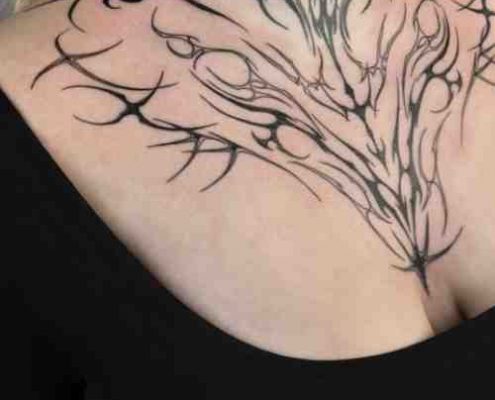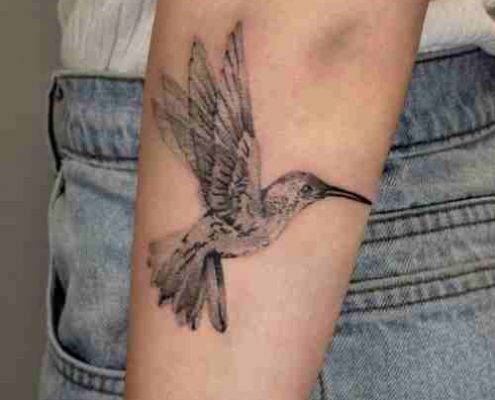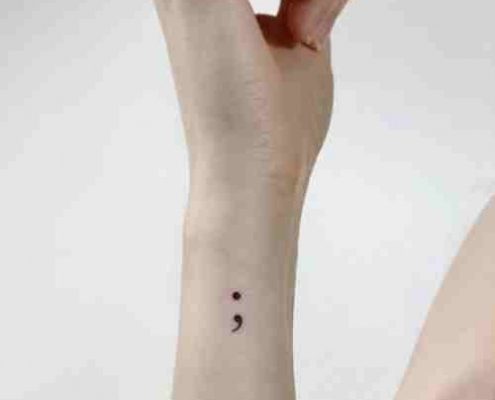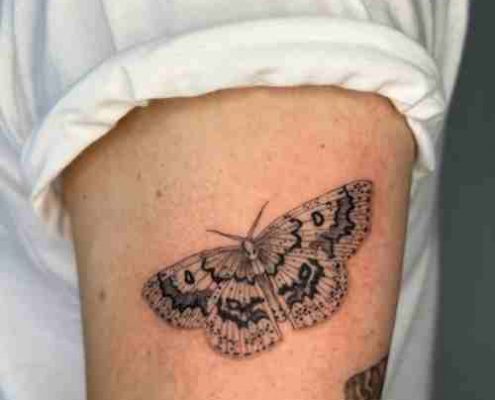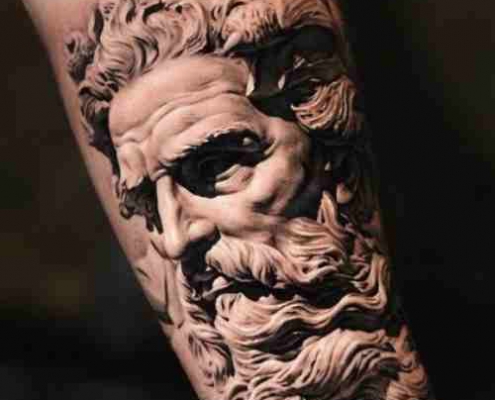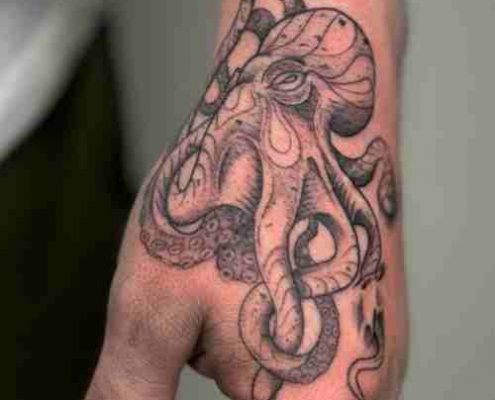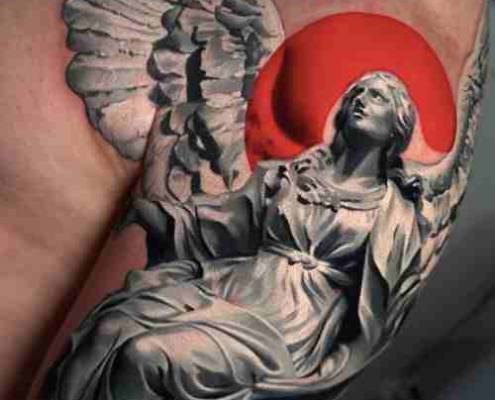Tiger Tattoo Ideas You Need To Inspire You
The tiger tattoo enjoys a great popularity among tattoo lovers of all walks of life. It is a powerful symbol across Asia, as modern tigers are all descendants of tigers from Asia, but also in many cultures.
As a result, tigers have been a staple element of tattooing in many Asian countries, especially in India, Malaysia, Burma, China, Thailand, Indonesia, Japan and Cambodia. Its ferocity and majestic appearance have given it important symbolic meaning in cultures throughout the continent.
The tiger symbol is associated with power, passion, ferocity and sensuality. In addition to these it represents beauty and speed, cruelty and wrath and its appearance in dream is usually a sign of new power or passion that has awakened within an individual.
Are you looking to get a tiger tattoo for yourself?
Check out our guide on its symbols across continents and cultures, and find over 200+ tiger tattoo ideas for inspiration below.
Table of Contents
- Tiger Tattoo Meaning
- Tiger In Chinese Mythology
- Tiger in Indian Mythology
- Tiger In Japanese Tattoo Art
- Best Tiger Tattoo Placements
- Tiger Tattoo Designs
- Small Tiger Tattoo Ideas
- Japanese Tiger Tattoo Ideas
- White Tiger Tattoo Ideas
- Traditional Tiger Tattoo Ideas
- Tiger Head Tattoo Ideas
- Tiger Eyes Tattoo Ideas
- Saber Tooth Tiger Tattoo Ideas
- Tribal Tiger Tattoo Ideas
- Tiger Stripes Tattoo Ideas
- Tiger Sleeve Tattoo Ideas
Every Tattoo Has A Story – Tiger Tattoo Symbols and Meanings
Given all modern tigers stem from Asia, of course their cultures have the most rich history in portraying tigers in their folklore, coats of arms, flags, and art.
Tiger is the national animal of many countries, which means it’s a great way to use it in tattoo designs to portray your Asian heritage.
- the Bengal tiger is the national animal of India,
- the Malayan Tiger is the national animal of Malaysia,
- the Siberian tiger is the national animal of South Korea,
- the Royal Bengal Tiger is the national animal of Bangladesh.
The modern tiger’s predecessors have come from China, which explains why this animal has such strong cultural roots in their mythology. That said, the tiger is one of the 12 Chinese Zodiac Animals. People born in the year of the tiger are thought to be competitive, self-confident, and brave.
It is believed that the Chinese tiger bears on its forehead the Chinese character “wang”, meaning “the king”.
As a spirit animal, the meaning for the tiger is said to be willpower, courage, and personal strength.
Instead of the Westernised werewolf, Asia believes in a weretiger that can change forms from a human being to a fearsome tiger and vice versa.
The Korean culture believes that tigers are guardians that will oust evil spirits and bring good luck. Therefore, they will frequently have pictures or statues of tigers in their homes or even as jewellery.
Tiger In Chinese Mythology
Tiger, as an ancient Chinese animal symbol is an emblem of dignity, ferocity, sternness, courage, and by itself is Yin energy.
Just like the bear, dragon, or a wolf, tiger is a symbol of protection, which means its commonly seen on clothing or in the home imagery to keep away any harm.
Tiger is the strongest animal in the Chinese folklore and subsequently the king of all animals, instead of the typical choice – the lion king of animals, or in Native American mythology where it’s the eagle.
Other parts of China see the tiger as the God of Wealth. Consequently, Tsai Shen Yeh, the Chinese God of Wealth is depicted sitting on a tiger. Such an image symbolizes the supremacy of the intangible forces, and our ability to harness the tiger’s power in our lives.
Chinese animal symbolism of the tiger can be narrowed down to:
- Power
- Energy
- Royalty
- Protection
- Generosity
- Illumination
- Unpredictability
Another way the Chinese myths see the tiger is as the protector of the dead, and will often be seen in graves as a mark of protection, assuring peace for those who have passed.
In ancient Chinese myth there are five tigers that hold the balance of cosmic forces in place and prevent chaos from collapsing into the universe.
These five tigers are:
- White Tiger: ruler of the Fall season and governor of the Metal elements
- Black Tiger: ruler of the Winter season and governor of the Water elements
- Blue Tiger: ruler of the Spring season and governor of the Earth elements
- Red Tiger: ruler of the Summer season and governor of the Fire elements
- Yellow Tiger: the supreme ruler of all these tigers and symbolic of the Sun
Tiger In Indian Mythology
Indian mythology is filled with tigers. Many stories have the tiger as the protagonist so the tiger fights dragons, brings rain in time of drought, brings babies to the childless and then keeps those children safe from nightmares, and has the ability to heal.
In a creation story from the northeast state of Nagaland, the mother of the first spirit, the first tiger and the first man emerged from the earth together through a pangolin’s den.
But the godly traits of the tigers continue to this day. Vaghadeva, the tiger god, is honored as guardian of the forest, propitiated with offerings of flowers and incense placed on simple rock shrines.
On the other hand, the Bengal Tiger is paramount in the traditions and culture of India. It associates with the deities Shiva and Durga, and members of the Warli tribe worship Warghia, the lord of the tigers while in the south the god Ayyappan is associated with the cat and the warrior goddess Durga is depicted riding a tigress in the battle.
In Buddhism, the tiger symbolizes anger.
Tiger In Japanese Tattoo Art (Irezumi)
Even though tigers have historically never lived on Japanese soil, the Japanese culture recognizes this animal and its strong symbolism affects all parts of folklore, from pictures, stories and skins, which were brought over by emissaries, monks, traders and soldiers.
As said, the Chinese people were seeing tiger as the king of animals, which of course translated into the Japanese culture to represent strength, courage and long life.
Because the tiger was thought to be especially protective of its young, tiger depictions were used to pray for the health and safety of ones children. For the same reason, the expression TORA NO KO (a tiger cub) came to be used to refer to any highly prized possession. Tigers are also said to be able to ward off bad luck, disease and Demons. In many old prints you will see a tiger fighting demons (Oni) at the side of “Shoki” The demon queller.
The traditional Japanese tattoo “Irezumi” is the decoration of the body with mythical beasts, flowers like cherry blossoms, leafs, and other images from stories, myths and tales. The woodblock print art were the driving force behind introducing irezumi into the tattoo art and notably the “hero’s heavily decorated with Irezumi”. Wearing Irezumi is an “Aspiration” to life’s goals.
Best Tiger Tattoo Placements
Tiger tattoo design, depending if it’s a small tiger head, or a part of big elaborate Japanese style tattoo scene, can be inked on different body parts such as tattoo sleeve.
It is very common to use with leaves and other nature elements for a forearm tattoo, especially a common tattoo choice for men. With other wildlife animals it often builds a tattoo sleeve scene.
Smaller designs fit very well on the biceps, hands, and calves, such as small geometric tattoos. Many women go for this type, in the form of a gentle faced, female tiger.
If you are looking just for the tiger roaring, you can also go for the upper arm, all into the shoulder and chest.
Tiger Tattoo Designs
To help you with your research for your next tattoo design, we went on a hunt through Instagram to find the best tiger tattoo ideas.
Take a look below to check them out all:
Small Tiger Tattoo
Japanese Tiger Tattoo
White Tiger Tattoo
Traditional Tiger Tattoo
Tiger Head Tattoo
Tiger Eyes Tattoo
Saber Tooth Tiger Tattoo
Tribal Tiger Tattoo
Tiger Stripes Tattoo
Tiger Sleeve Tattoo
Are you looking for a custom tiger tattoo design? We got you.
Our expert tattoo artists will provide a quick initial draft to get you going.
Happy inking ❤

Milena Petrovic
About the author
Milena has decided to start an organization that will create a safe environment for everybody to get their first, second or third tattoo and to encourage young people to transform their ideas into tattoos safely, with talent and vision.
You can find her writing about tattoos on Quora or updating our Pinterest profile with awesome tattoo ideas!




